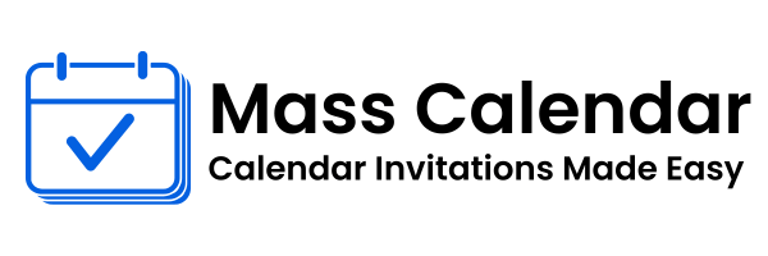Effortless Meeting Coordination: Why Bulk Scheduling is the New Normal
Organizing meetings is easy when you’re only inviting two or three people. But when your invite list balloons into the dozens or even hundreds your regular scheduling process may not cut it. That’s where bulk meeting invites become essential.
BLOG
7/28/20252 min read


Organizing meetings is easy when you’re only inviting two or three people. But when your invite list balloons into the dozens or even hundreds your regular scheduling process may not cut it. That’s where bulk meeting invites become essential.
Whether you’re coordinating a monthly leadership call, a product launch, or a client webinar, this blog walks you through the must-know strategies for managing large-scale calendar invitations effectively.
The Rise of Bulk Scheduling
As remote work becomes commonplace and collaboration scales across regions, many professionals are struggling with fragmented tools and inconsistent attendance. Handling a single invite may seem simple, but when scaled to a team-wide update or all-hands call, it quickly turns into a nightmare.
Why Traditional Methods Fail
Using standard email clients to send mass meeting invites in Gmail or Outlook can work if your invite list is small. Once you start scheduling events across departments or organizations, challenges include:
Repetitive manual entry
Difficulty syncing with various calendar platforms
Inconsistent formatting
No centralized RSVP tracking
If you're trying to send multiple calendar invites manually, mistakes are inevitably missed time zones, wrong meeting links, or duplicate entries.
Common Use Cases
Let’s look at a few common scenarios where bulk calendar invite systems prove invaluable:
Company-wide briefings
Quarterly business reviews
Virtual product demos
Regional sales meetings
Training sessions for new hires
For these scenarios, it’s more efficient to pre-plan your calendar communication strategy, rather than reactively sending invites on the fly.
Overcoming Scheduling Fatigue
Frequent calendar updates and disorganized invite systems can create “calendar fatigue,” where employees ignore meeting requests altogether. Solving this means:
Keeping calendar invites personalized yet scalable
Avoiding unnecessary invites for optional sessions
Centralizing your invite system for better visibility
This is especially useful when you send bulk meeting invite in Gmail or send mass meeting invites in Outlook, as managing large email lists manually is error-prone.
Tips for Better Meeting Scheduling
Use CSV-based imports to populate calendar fields
Leverage time zones automatically based on invitee location
Include clear agenda and expected outcomes
Attach video conferencing links like Zoom or Google Meet
Send reminders 24 hours and 1 hour before the meeting
When sending multiple calendar invites, thoughtful planning increases attendance and reduces rescheduling friction.
Calendar Hygiene Matters
Clean calendar practices ensure everyone on the team gets the right information at the right time. That includes:
Setting permissions correctly
Adding calendar blockers
Avoiding overlapping sessions
Respecting working hours
Mass scheduling done wrong can disrupt productivity rather than enhance it.
Avoid These Mistakes
Forgetting to BCC in mass emails
Not segmenting lists (e.g., internal vs. external)
Sending invites without context or subject lines
Failing to follow up after sending calendar events
If you’re managing mass meeting invites, these small mistakes can multiply across hundreds of recipients.
Conclusion
Managing multiple meetings isn’t about doing more—it’s about doing things smarter. Whether you're trying to send bulk meeting invite in Gmail or organize company-wide sessions, having a structured, repeatable process is essential.
Calendar efficiency is no longer a luxury it’s a necessity for modern teams.
MassCalendar.in
Send Bulk & Mass Calendar Invites Instantly
CONTACT
Meetings
+44 (0) 203 916 5117
© 2025. All rights reserved.
Help?
